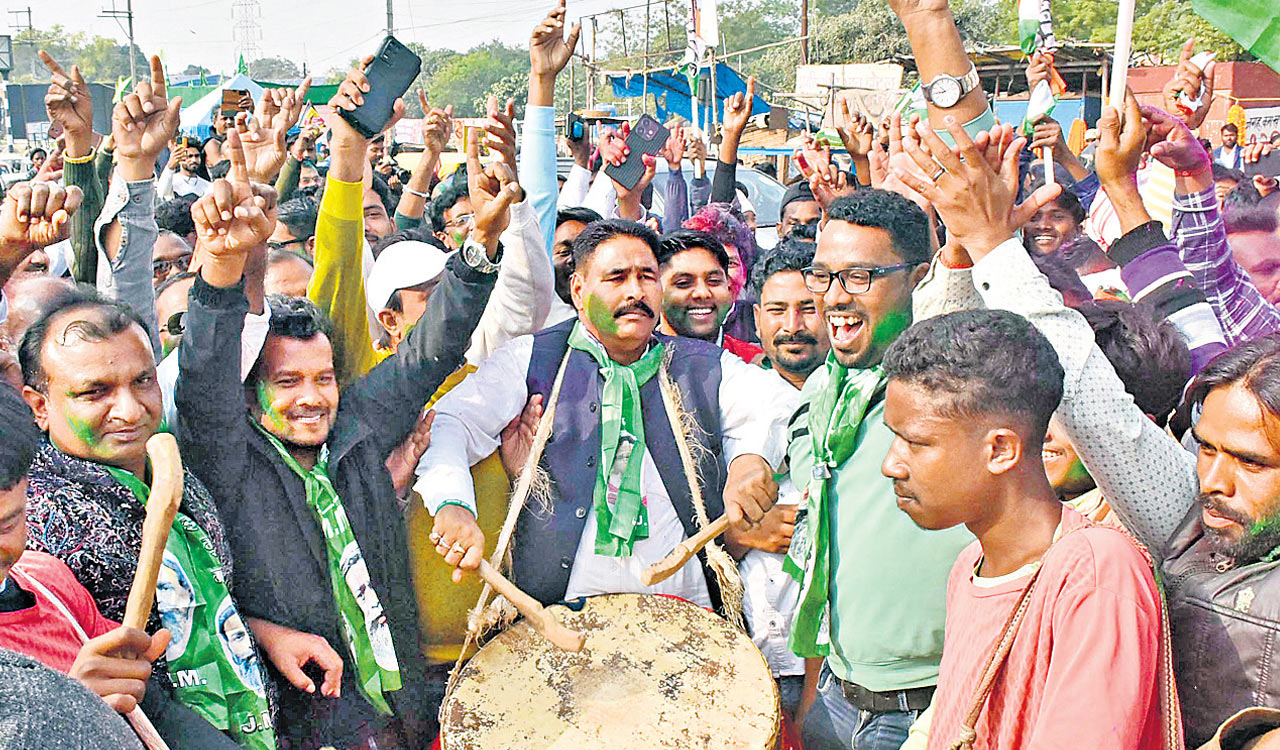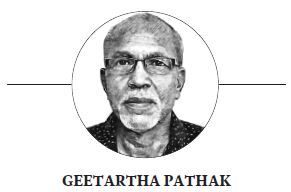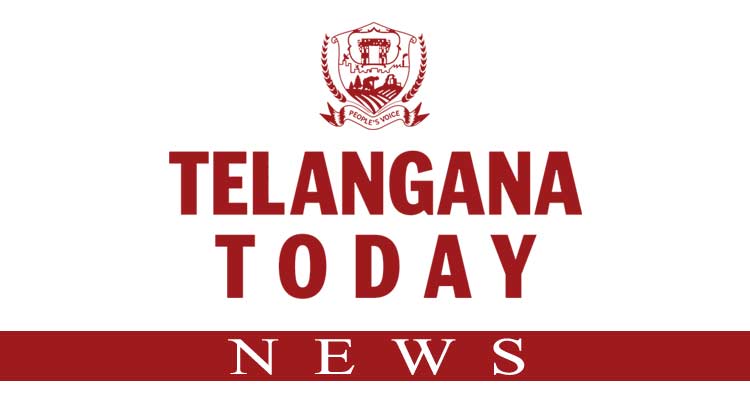Opinion: Infiltration narrative falls flat
Census data since 1881 has shown a gradual decline of tribal population as against the gradual increase of non-tribal population in Jharkhand

By Geetartha Pathak
The BJP’s main poll plank this time in the Jharkhand Assembly elections was the issue of large-scale infiltration of illegal Bangladeshi nationals and enrolment of their names in the electoral rolls at the indulgence of the Hemant Soren-led Jharkhand Mukti Morcha government. In Assam, the vexed issue of infiltration from Bangladesh into India has been coming up every election since 1979. Thereafter, the issue was exported to other States to establish the legitimacy of the ideology of certain political forces, particularly proponents of Hindutva.
The issue of largescale infiltration first surfaced in Assam when the draft enrolments in Mangaldoi showed a high number of Bengali-speaking voters during the byelection to the Mongoldoi parliamentary constituency in 1979. The All Assam Students union (AASU) and other organisations claimed that lakhs of names of Bangladeshi citizens were enrolled in the voter lists. They decided to campaign for thoroughly revised electoral rolls in the entire State by boycotting the 1980 Lok Sabha election. The six-year-long movement culminated after the signing of the Assam Accord in 1985 between the agitators and the then Rajiv Gandhi government at the Centre. It also paved the way for the formation of a government led by the leaders of the agitation who created a regional political party known as Asom Gana Parishad (AGP).
Unresolved Issues
The regional forces then claimed that the Assam Accord did not solve the problem of foreign nationals, primarily due to the Illegal Migrants (Determination by Tribunals) Act (IMDT Act), 1983, passed by the Indira Gandhi government soon after the disastrous 1983 elections. In 2005, the Supreme Court scrapped the IMDT Act and Sarbananda Sonowal, the then AGP leader who fought the case against the IMDT Act in the SC, became a national hero overnight. However, this did not solve the problem of infiltration, particularly from Bangladesh.
Then the demand for updating the National Register of Citizens came up. After a six-year Gauhati High Court-monitored exercise, the final version of the NRC was published in 2019 from which 19 lakh names were excluded. Of the 19 lakh, 7 lakhs are Bengali-speaking Muslims and the rest Hindus. The entire exercise cost Rs 1,602.66 crore. The ruling BJP wanted to review the entire exercise. The ruling BJP is ready to accept Hindu infiltrators who entered Assam after 25 March 1971, a deadline set by the Assam Accord. It promised to implement the Assam Accord in letter and spirit in its electoral manifesto of the 2016 Assembly elections.
Citizenship (Amendment) Act
However, with the enactment of the Citizenship (Amendment) Act, its electoral promise has become infructuous. Clause 6 (a) of the Citizenship Act which was inserted to the Act to accommodate the provisions of the Assam Accord is now colliding with Clause 6(b) of the Citizenship (Amendment) Act. Clause 6(a) was added to protect Assam”s demographic integrity by excluding migrants who arrived after 1971 but Clause 6(b) of the CAA grants fast-track citizenship to non-Muslim migrants from Bangladesh, Pakistan, and Afghanistan, even if they entered after 1971. The main concern of the Assam agitation or the Assam Accord remains but the issue has become an effective tool for politicians to climb to the corridor of power.
The same rhetoric echoed from Jharkhand. The BJP claims that infiltrations of Bangladeshi people have changed the demography of the tribal regions of Jharkhand, citing the “decline” of the Adivasi population, particularly in Santhal Pargana which borders Bengal and Bihar. Prime Minister Modi in his electoral campaign in Jharkhand said: “The truth is that they (infiltrators) are standing with JMM and are now getting a hold over it. Some of them have even joined JMM. This is happening as the spirit of Congress has entered JMM and whenever this happens with any party, appeasement becomes the sole agenda of that organisation. For this, they sacrifice the interests of the Dalits, backwards and tribals.”
Political forces should focus on resolving the real issues facing the tribals of Jharkhand instead of imposing a failed issue from Assam, creating a perceived threat
The BJP tried to establish the allegations through actions by the Enforcement Department (ED) and the state police by conducting investigations, raids and arrests before the Assembly elections. On 12 November, a day before the first phase of the election, the ED conducted raids across multiple locations in Jharkhand as well as in neighbouring West Bengal. The agency said the operation was part of an ongoing money-laundering investigation into the suspected illegal entry of Bangladeshi nationals.
Population Patterns
The fact, however, remains that the infiltration of Bangladeshi citizens has nothing to do with the changes of population patterns in Jharkhand. Government data and independent research show that the State’s tribal population has been shrinking since before Independence, with out-migration playing a role in the changing composition of the population. Census data since 1881 has shown a gradual decline of tribal population in the State as against the gradual increase of non-tribal population in the region. The main reasons for a change in population pattern are the immigration of non-tribal peoples in the region; emigration of tribal peoples in other places; and the adverse effects of industrialisation and urbanisation in the region. A low birth rate and high death rate are also partially responsible for this situation.
As per the 2001 census, Hinduism is followed by 68.5% of the population of Jharkhand. Islam is followed by 13.8% and the Animistic Sarna religion is practised by 13% of the population. Christianity with 4.1% is the fourth largest religious community in Jharkhand. Jainism, Buddhism and Sikhism are all practised making a little less than 1%. With a Muslim population of 13%, Jharkhand is still below the national average of 14.2%.
While Jharkhand was carved out of Bihar only in 2000, a 2001 paper published in the Economic and Political Weekly (EPW) journal by Ranchi-based researcher Alexius Ekka reported that the Census records of 1881 during British rule show that tribals were never a majority group in this region. Census data, from 1881 to 1941, for what was then the Chhotanagpur region in southern Bihar shows that the tribal population increased to its peak at 38.42% of the total population in 1911 and was at its lowest in 1941 at 30.89%.
Jharkhand was covered with dense forest and its terrain had always been inaccessible. Nevertheless, the discovery of hidden mineral wealth has transformed the State into one of the leading industrialised regions of India. Minefields, railways and roadways have developed rapidly, and educational and technical institutions have come up in main towns, transforming it into a cosmopolitan one; even as the tribal people of the region have lost their land and faced indiscriminate exploitation.
Without resolving the real issues facing the tribals of Jharkhand, political forces should not impose a vexed, failed issue from Assam, creating a perceived. The I.N.D.I.A bloc’s big win in Jharkhand is an indication of voters’ rejection of the false narrative propagated by the BJP.

(The author is a senior journalist from Assam)
Related News
-
Bandi Sanjay says Revanth Reddy hatching conspiracy to malign Allu Arjun
-
Former Maharashtra Governor Ch Vidyasagar Rao meets President Draupadi Murmu, gifts autobiography ‘Unika’
-
Ganges river dolphin tagged and released in Assam
-
Dalit rights committee to calls for nation-wide protests against Amit Shah’s remarks on Dr BR Amebdkar
-
Cartoon Today on December 25, 2024
6 hours ago -
Sandhya Theatre stampede case: Allu Arjun questioned for 3 hours by Chikkadpallly police
7 hours ago -
Telangana: TRSMA pitches for 15% school fee hike and Right to Fee Collection Act
7 hours ago -
Former Home Secretary Ajay Kumar Bhalla appointed Manipur Governor, Kerala Governor shifted to Bihar
7 hours ago -
Hyderabad: Organs of 74-year-old man donated as part of Jeevandan
7 hours ago -
Opinion: The China factor in India-Nepal relations
8 hours ago -
Editorial: Modi’s Kuwait outreach
8 hours ago -
Telangana HC suspends orders against KCR and Harish Rao
8 hours ago




